Thyzoid
Harmless

Posts: 14
Registered: 21-5-2019
Location: Lab
Member Is Offline
Mood: Alive.
|
|
High yielding and cheap method for the production of Potassium Cyanide
The synthesis of potassium cyanide has been discussed numerous times yet the majority of methods have three main flaws: Either the synthesis involves
one spicy gas (hydrogen cyanide), it uses expensive reagents (alkaline metals) which are unavailable for some members or it yields a highly
contaminated product which is hard to purify. Whether you are blessed with the genetics of a god and can smell hydrogen cyanide or not we could all
agree that odour is insufficient as a warning indicator and special monitoring devices are expensive. Sodium should only be employed for small scale
preparations or be used for more useful projects.
The following synthesis involves only a single reagent and another one for the cleanup. Despite not using hydrogen cyanide this synthesis should only
be repeated if you are 100% sure that you can handle cyanides safely. Understand the dangers involved and do not make cyanide no matter how much you
need it if you are unsure. Tiny amounts between 0,5mg and 3,5mg per kilogram of body weight are known to kill.
The Synthesis:
123,9g of Potassium FerrOcyanide Trihydrate (the yellow salt the red one cannot be used) were added to an iron crucible. Aluminium is unsuited due to
its low melting point. The container was placed into an electric furnace capable of maintaining a temperature between 850-950°C. The furnace was
switched on and the moment the target temperature was reached a 1 hour timer was started. Heating for exactly one hour is overkill and 30 minutes may
suffice. The furnace used contained residual carbon which reacted with leftover oxygen. The lid was lifted occasionally to check on the reaction and
the first three times we were greeted with a lovely fireball. The flammable gasses could have either resulted from the combustion of carbon monoxide
or more likely due to the combustion of a product of the reaction. Cyanogen gas is formed as a side product. It is a highly toxic gas and it is the
reason this preparation needs to be conducted in a very well ventilated area. At these high temperatures most of it should immediately be oxidised to
harmless side products but you do not want to run the risk of being exposed.
Once 1 hour had passed the crucible was removed from the furnace and allowed to cool down. The product was gently removed using brute force and a
heavy hammer. There is no other viable way to remove the contaminated cyanide cake.
Due to the formation of iron carbide, iron metal, carbon and iron oxide a cleanup must follow. Hot water as an extraction solvent was not used as it
would hydrolyse some of the cyanide. Our solvent of choice was 99,85+% of Methanol. Cyanide has a solubility of >30g/L of MeOH while poorly soluble
in EtOH.
The crushed up, contaminated cyanide was placed into a glas tube plugged with cotton on both ends and a capillary tube was added to the top to allow
air to leave. A soxhlet extraction was set up. We used a high efficiency soxhlet extractor (This is a form of soxhlet extractor where the heated
solvent gasses do not pass trough an external tube but trough a glass mantle surrounding the extraction chamber. The solvent and the material to be
extracted are thus heated and get to a temperature near the boiling point of the solvent). The soxhlet extraction was allowed to run for 10 hours. A
few particles of the contaminants made it trough the cotton filter. With finer cotton this could be avoided.
Most of the solvent was recovered after the soxhlet extraction by distilling it off. Not all solvent should be distilled off. About 70ml of methanol
were left behind alongside the cyanide. The methanol solution was slightly brown but the crashed out cyanide looked white. A vacuum filtration was
performed and leftover cyanide was washed out of the flask using the methanol which already passed trough the filter. The cyanide was sucked dry over
the course of 5 minutes before transferring it to a storage bottle. Without a lid the bottle was placed into a vacuum desiccator over dry potassium
hydroxide until the weight was constant. The product may be stabilised using potassium hydroxide.
The presence of cyanide was proven using a mixture of iron(II) and iron(III) salts. The purity may be determined soon. If you have good ideas for
methods to test the purity let me know.
Yield: 53,5g (70%) White powder with tiny hint of grey. The product was used successfully to perform a benzoin addition or for making benzyl cyanide
without further purification.
Reactions:
K4Fe(CN)6 ———> 4 KCN + Fe + N2 + 2 C
K4Fe(CN)6 ———> 4 KCN + Fe + (CN)2
6 Fe + (CN)2 ———> 2 Fe3CC + N2
F3C + O2 ———> 3 Fe + CO2
3 Fe + 2 O2 ———> Fe304
References:
https://link.springer.com/article/10.1007/BF01915163 (paper on the thermal decomposition, reactions and other information / can be opened on s
hub)
https://nvlpubs.nist.gov/nistpubs/jres/6/jresv6n6p1051_A2b.p... (solubility of KCN in EtOH and MeOH and a great paper on the purification of
cyanides using recrystallisation)
A video of this procedure is available on my Patreon as YouTube would certainly give me a strike but as I want this information and my experiences
with this prep to be publicly available this sciencemadness post was written for your reading pleasure. Hope this helps. If anyone tests this method
let me know what you think about it.
[Edited on 18-3-2023 by Thyzoid]
|
|
|
Thyzoid
Harmless

Posts: 14
Registered: 21-5-2019
Location: Lab
Member Is Offline
Mood: Alive.
|
|
Pictures 1
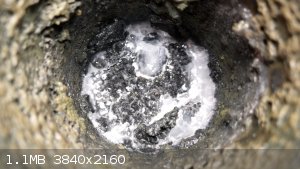 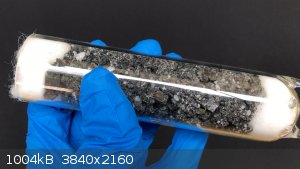 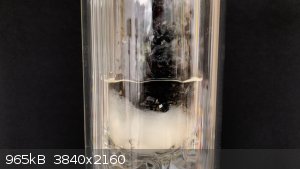 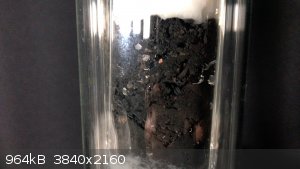 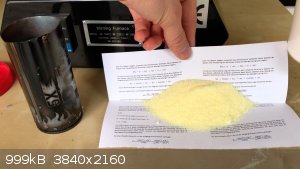 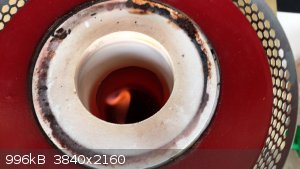
|
|
|
Thyzoid
Harmless

Posts: 14
Registered: 21-5-2019
Location: Lab
Member Is Offline
Mood: Alive.
|
|
Pictures 2
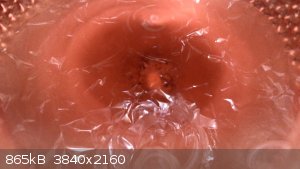 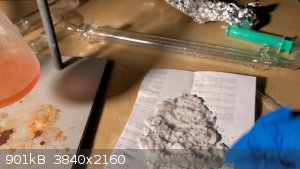 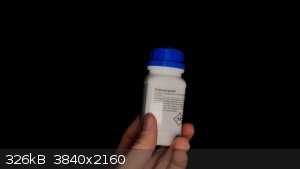 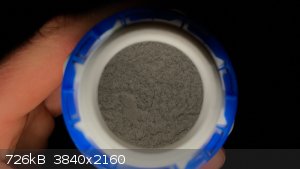
|
|
|
Admagistr
Hazard to Others
  
Posts: 350
Registered: 4-11-2021
Location: Central Europe
Member Is Offline
Mood: The dreaming alchemist
|
|
Great work ! !
Edit by Texium: removed excessively long and unnecessary quote
[Edited on 3-18-2023 by Texium]
|
|
|
PirateDocBrown
National Hazard
   
Posts: 570
Registered: 27-11-2016
Location: Minnesota
Member Is Offline
Mood: No Mood
|
|
Well done. Saw your YT post.
Phlogiston manufacturer/supplier.
For all your phlogiston needs.
|
|
|
Bedlasky
International Hazard
    
Posts: 1219
Registered: 15-4-2019
Location: Period 5, group 6
Member Is Offline
Mood: Volatile
|
|
Nice write-up! I read about this reaction few years ago, but you are the first person I know who has used this method. Well done!
Quote: Originally posted by Thyzoid  | | The presence of cyanide was proven using a mixture of iron(II) and iron(III) salts. The purity may be determined soon. If you have good ideas for
methods to test the purity let me know. |
Titration with standard AgNO3 solution in ammoniacal buffer, KI is used as indicator. Cyanide reacts with Ag+ ions according to equation:
Ag + 2CN- --> [Ag(CN)2]-
First excess of Ag+ react with I- to form yellow precipitate of AgI. This indicates end-point.
Another possibility is reaction with excess of standard Na2S2O3 solution, than titration of unreacted thiosulfate with standard I2 solution. Starch is
used as indicator.
S2O3(2-) + CN- --> SCN- + SO3(2-)
|
|
|
Lionel Spanner
Hazard to Others
  
Posts: 163
Registered: 14-12-2021
Location: near Barnsley, UK
Member Is Offline
|
|
Great work!
Incidentally, I'm quite a fan of your videos - the presentation and pacing are excellent.
|
|
|
blogfast25
International Hazard
    
Posts: 10562
Registered: 3-2-2008
Location: Neverland
Member Is Offline
Mood: No Mood
|
|
Nice work!
What's the photo left/up?
|
|
|
Thyzoid
Harmless

Posts: 14
Registered: 21-5-2019
Location: Lab
Member Is Offline
Mood: Alive.
|
|
@blogfast25
The picture on the upper left corner is the methanol after 10 hours of refluxing. It was slightly reddish due to what i guess was iron contamination.
The next day when I did the vacuum filtration the MeOH was more brown than red but most of the brownish solution fortunately went right trough the
filter.
@Bedlasky
Your titration method seems good. I'll try that one. Need to get new silver nitrate standard solution first as my old 1L bottle unfortunately fell on
the floor. You wouldn't believe how hard that mess was to clean up.
[Edited on 18-3-2023 by Thyzoid]
|
|
|
macckone
International Hazard
    
Posts: 2159
Registered: 1-3-2013
Location: Over a mile high
Member Is Offline
Mood: Electrical
|
|
Excellent writeup.
|
|
|
Osmiridium
Harmless

Posts: 26
Registered: 13-3-2023
Member Is Offline
Mood: excited
|
|
Very nice!
Under certain circumstances (certainly low pH) HCN tends to polymerize to some brown compounds. The brown color may be also caused by this. For most
application such a small contamination shouldn't be an issue though.
|
|
|
draculic acid69
International Hazard
    
Posts: 1371
Registered: 2-8-2018
Member Is Offline
|
|
Quote: Originally posted by Osmiridium  | Very nice!
Under certain circumstances (certainly low pH) HCN tends to polymerize to some brown compounds. The brown color may be also caused by this. For most
application such a small contamination shouldn't be an issue though. |
Polycyanite.sounds horrible and terrifying
|
|
|
mr_bovinejony
Hazard to Others
  
Posts: 121
Registered: 20-4-2018
Member Is Offline
Mood: ASS
|
|
This method works great except for getting it out of the crucible. Would Borax help this problem or will it react?
|
|
|